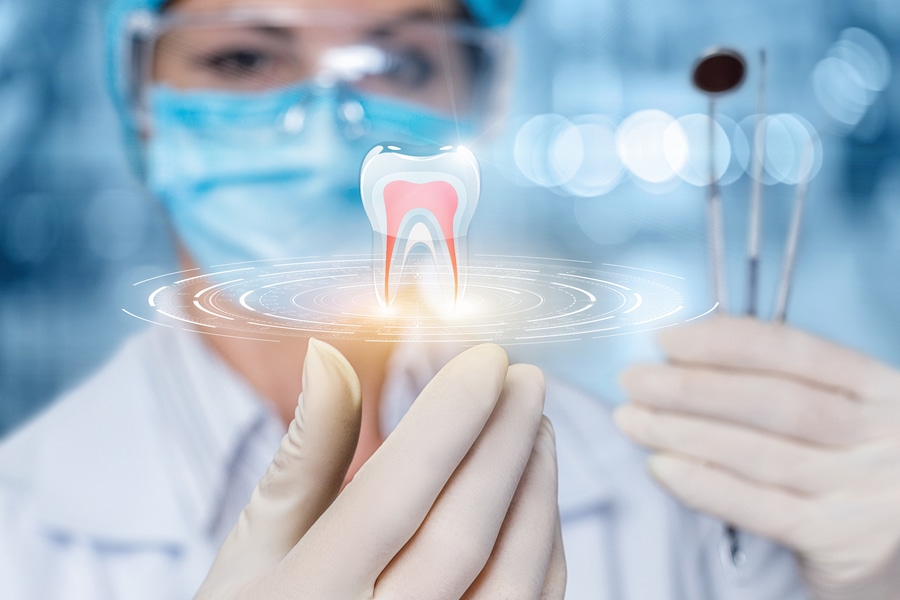
#Industry News
DIGITAL DENTISTRY: WHAT IT IS AND WHERE IT’S GOING
Meeting the challenge with teeth
Dentistry is the medical specialty that deals with the diagnosis, prevention, and treatment of diseases affecting the teeth and gums. Thanks to advancements in tools and systems, the field is equipped to handle many challenges.
Dentistry Overview
The medical profession of dentistry is the branch focused on a person’s teeth, gums, and mouth. It is also known as dental medicine and oral medicine. Diagnosis, treatment, and prevention of teeth diseases, the supporting structures, and diseases of the mouth's soft tissues are all part of dentistry. Note many systemic conditions like diabetes, osteoporosis, and HIV sometimes first show up in one’s mouth before showing elsewhere in the body.
Providers of oral medicine are called dentists. Some of their major tasks include:
Evaluates the overall health of their patients.
Perform clinical procedures ranging from exams, fillings, and crowns to extractions and corrective surgeries.
Identify, diagnose, and treat oral conditions.
Dentists may also specialize. Endodontics (root canals) and Periodontics (gum disease) are two such specializations in dentistry.
Dentists don’t work alone. Their dental team is composed of dental assistants, hygienists, technicians, and therapists. All work together to provide the best of care for patients.
Dentists can be found working in private offices, hospitals, or institutions such as military bases and prisons.
Employment Market for Dentistry
Based on data provided by the Bureau of Labor Statistics, the job outlook for dentistry is expected to increase by approximately 6 percent annually from 2021 to 2031. This growth rate is considered average, and can be attributed to a variety of factors including changes in healthcare legislation, an expanding population, and retirement.
Employment Market for Dentistry
Based on data provided by the Bureau of Labor Statistics, the job outlook for dentistry is expected to increase by approximately 6 percent annually from 2021 to 2031. This growth rate is considered average, and can be attributed to a variety of factors including changes in healthcare legislation, an expanding population, and retirement.
Three Challenges and Tech Solutions
The dental industry, like the rest of healthcare, faces numerous challenges. Dental practices face increasing costs, employee shortages, patient expectations, and technological changes and shifts. Several are investing in the latest equipment and technology in order to outsmart these challenges and offer premium dental care to patients.
How does a dental office attract new clients? Keep in touch outside of office hours? Make the dental practice as efficient as possible? We address these three challenges and their possible tech solutions in the following.
Dental Digital Front Door Marketing
People use the internet to find a variety of services, including dentists. A modern website with an intuitive interface establishes credibility and expertise.The site should:
Be optimized for search engines (particularly for local searches)
Be up-to-date as possible especially with contact information and location address
Provide staff information
Display payment plans from acceptable insurances to discounts for cash payments
Showcase social media and patient review information
Teledentistry Keeps in Touch
The onset of COVID-19 in 2020 brought telemedicine to the public consciousness as healthcare sought ways to continue treating non-urgent patients while protecting them as well as the medical staff. Teledentistry worked similarly, providing a setting for dentists to provide patient care ranging from medication to answering questions about dental procedure or aftercare.
Patients expect to continue seeing teledentistry options from dental offices even after restrictions have been lifted.
Multi Solutions from Dental Computers
Many tech-centric dental trends look to reduce the average dental practice overhead significantly while cutting down procedure times. A simple one is switching over to touchscreen medical computers.
Touchscreens are naturally more intuitive. Dental staff don’t waste valuable time learning and adjusting fiddly external controls. Touchscreens allow the user to touch exactly what they need to control or alter. This becomes even more important on medical tablets and their smaller surfaces.
Many medical computers and tablets are built with antimicrobial casings to protect their exteriors from bacteria. Interior components are protected from stray water blasts during routine dental procedures like teeth cleaning thanks to an IP65 sealed front bezel.
Fanless cooling systems are commonly used in medical computers as they produce no noise. This feature is highly beneficial in dentistry, where a variety of cleaning tools like piezoelectric and sonic scalers, and ultrasonic scalers and cleaners are used. These tools emit high levels of sound, which can potentially cause hearing loss or tinnitus after prolonged exposure over many years. Fanless PCs are completely silent and do not contribute to possible hearing damage.
Closing Comment
Dentistry is the medical speciality that deals with oral medicine like teeth and gum health. Like all healthcare, dentists and their teams have many challenges like attracting new patients to healthcare regulations.
Contact an expert at Cybernet if you’re a dentist or work in a dental office and are looking to see how medical computers and tablets may be the solution to your challenges.








